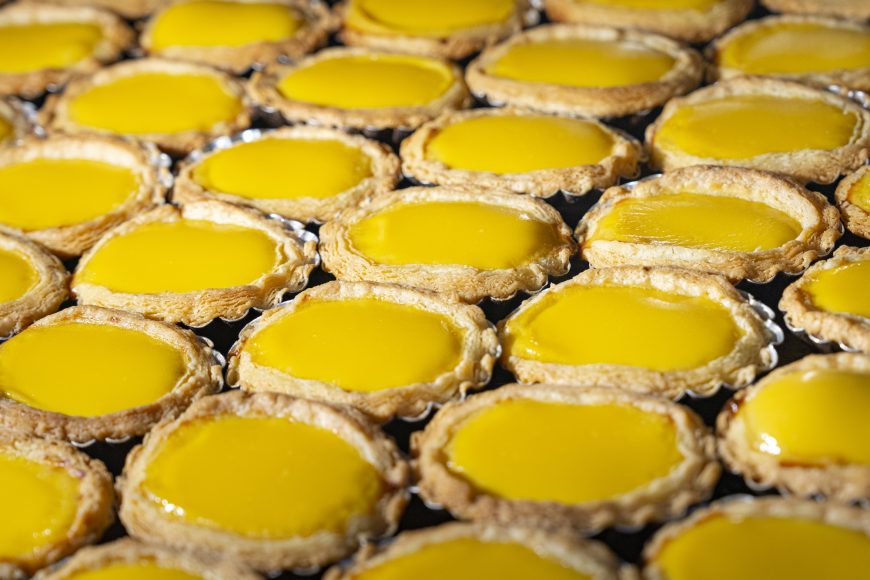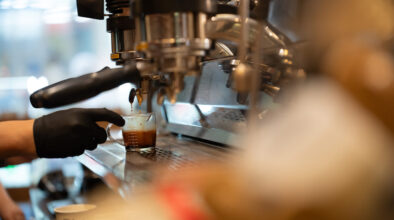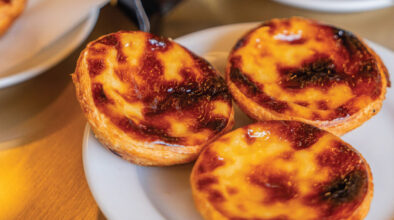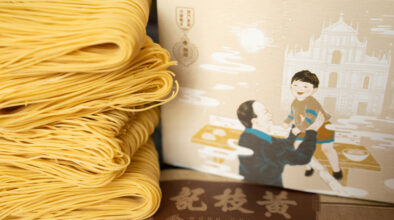Chion Chau café looks and sounds like any old-fashioned bing sutt. Upon entering, you are greeted with loudly chattering customers and old furniture. Wooden tables and plastic chairs seat two or four; there are hanging fans to beat the heat. A tall rack of sheet pans stands at the entrance, laden with glorious golden egg tarts, fresh-baked wife cakes and pineapple buns – irresistible to passersby, particularly those hailing from Japan.
This quirk of clientele comes courtesy of a Japanese travel writer who, about 10 years ago, stumbled upon the shop and was blown away by its egg tarts. Chion Chau makes their take on this classic extra flaky: no less than 243 layers of pastry can be counted, for those who have the time. Impressed, the writer featured the café in his new guide book to Macao, and invited its owner, Leong Tat Veng, on the first overseas trip of his life . “He asked me to bring boxes of my egg tarts to Japan, because he really wanted local people to taste them,” Leong recalls. “It was my first time taking a flight and, when I landed, the egg tarts were still warm.”

Ask the 78-year-old what Chion Chau’s best pastry is, however, and he’ll advocate for his wife cakes. This other much-loved classic consists of flaky pastry filled with candied winter melon and almond paste. They’re very popular: “In the Mid-Autumn Festival this year, a tourist from the Chinese mainland bought around 120 wife cakes for his neighbours in the village,” says Leong, with some pride.
The veteran baker’s dedication to his trade has earned Chion Chau a place in the Macao Government Tourism Office’s Distinctive Shops Programme. This initiative aims to preserve the city’s indelible heritage through promoting small businesses that, in turn, contribute to Macao’s unique culture. It safeguards traditional trades and craftsmanship, in other words. The Distinctive Shops Programme filmed a series of promotional videos about Chion Chau, which screen on platforms like TikTok and Dianping, as well as at Macao’s Border Gate. These alert mainlanders to the delicacies that await them on a trip to Macao.
From zero to hero

Leong, a native of Shunde, Guangdong Province, moved to Macao in 1962. Just 17 years old, he was looking for a job – with only a good attitude to offer at the time. A bakery in the city’s northwest agreed to teach the willing worker the ropes. Later, Leong honed his baking skills in a series of Hong Kong-style diners.
Meanwhile, an already time-honoured bing sutt – meaning, ‘cold drinks room’ – was doing a roaring trade on the Rua de Cinco de Outubro, in the heart of Macao’s historic Old Town. This was the city’s original Chion Chau, which started out as a roastery brand in Guangzhou before opening branches in Macao and Hong Kong in the 1940s. Somewhere along the line, it transitioned into a bing sutt. Leong’s cousin worked at Chion Chau in the 1960s, so wangled a job there for Leong.
In 1970, when Chion Chau’s owner relocated to Hong Kong, Leong scraped together enough money to purchase the business. His first major challenge was a severe staff shortage. A 10-strong operation previously, many of the shop’s workers headed to Hong Kong with the old owner. Leong was left with just two staffers: one handled baking (alongside Leong), the other managed the drinks counter. Making coffees and assorted teas may look easy, says Leong, but making them well requires skill. And when the bing sutt got busy, the job was too big for one guy – who could be required to prepare 20 different orders in a single minute, as well as remember who had paid for what. Leong, who admits he is not great at this arduous task himself, soon hired another person to help his drinks guy out.
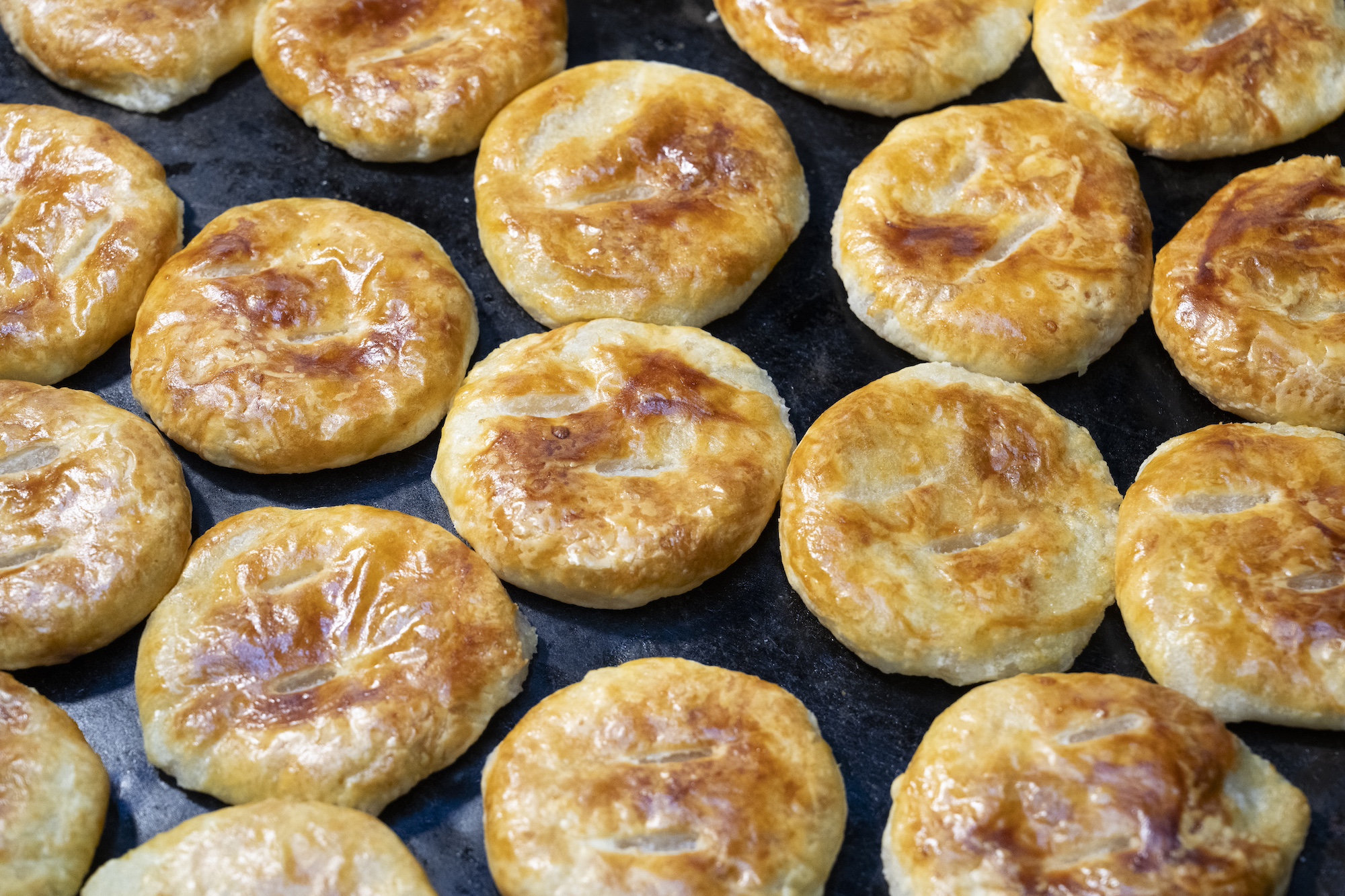
In the early days, most of Chion Chau’s customers were unskilled labourers from the mainland. “During break time, they came and had deep-fried buns filled with shredded coconut,” Leong recalls. “The buns were pretty much the same size as our plates. They were filling.”
The original premise was a three-storey building a few shops down from Chion Chau’s current site. When that old building was slated for demolition in the ’90s, Leong wanted to stay in the Rua de Cinco de Outubro. “Most of our customers were locals and we wanted to stay in the community,” he says. Interior design-wise, nothing has changed much between then and now. The bing sutt is basic, but well-scrubbed and functional. “Back in the sixties, there was not such a thing about design and decoration,” says Leong. “As long as the café is clean, we are in business,” says Leong. It’s a philosophy he’s maintained over the decades.
The next generation
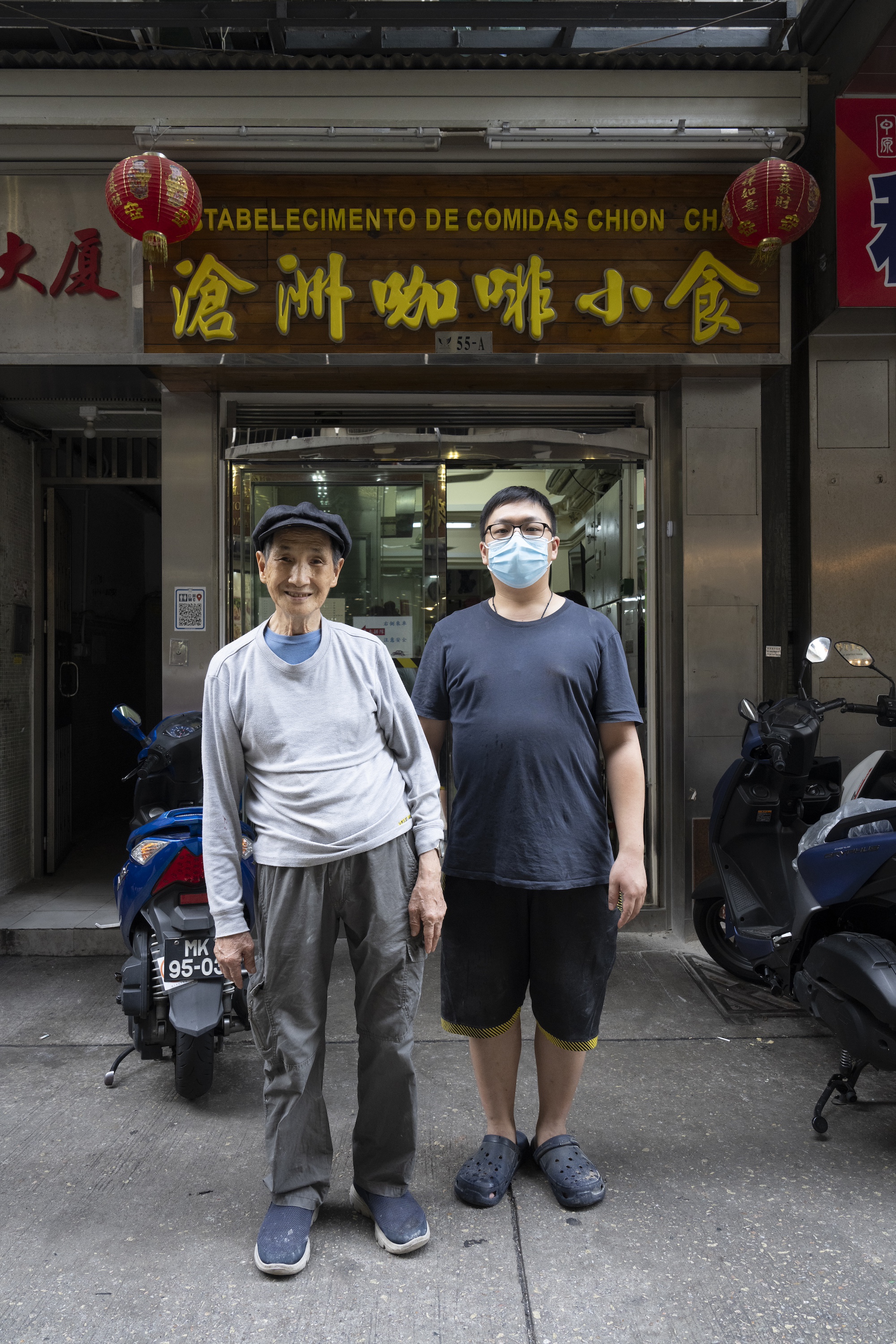
Leong’s youngest son, Leong U Chong, spent his childhood as dad’s little helper in Chion Chau’s kitchen. Even at home, he loved making cakes. The 28-year-old remembers pouring over his mother’s recipe books and developing a talent for Western fare: sponge cakes, cheesecakes and croissants. Whenever he ran out of ingredients, he’d run over to Chion Chau to stock up.
When U Chong graduated from high school, he joined the Chion Chau team. “At that time, I wasn’t thinking of taking over the business,” he says. “I’d just finished school and thought my parents worked very hard, so I wanted to help them out.” The experience taught him the difference between baking as a hobby and baking as a profession. The café was understaffed at the time, so there was a lot of rushing down from the first-floor bakery to the ground-floor cashier and back up. There were many recipes to memorise, cakes to make, and customers to serve – all as quickly as possible. “When I baked at home, I could take my time,” U Chong says.
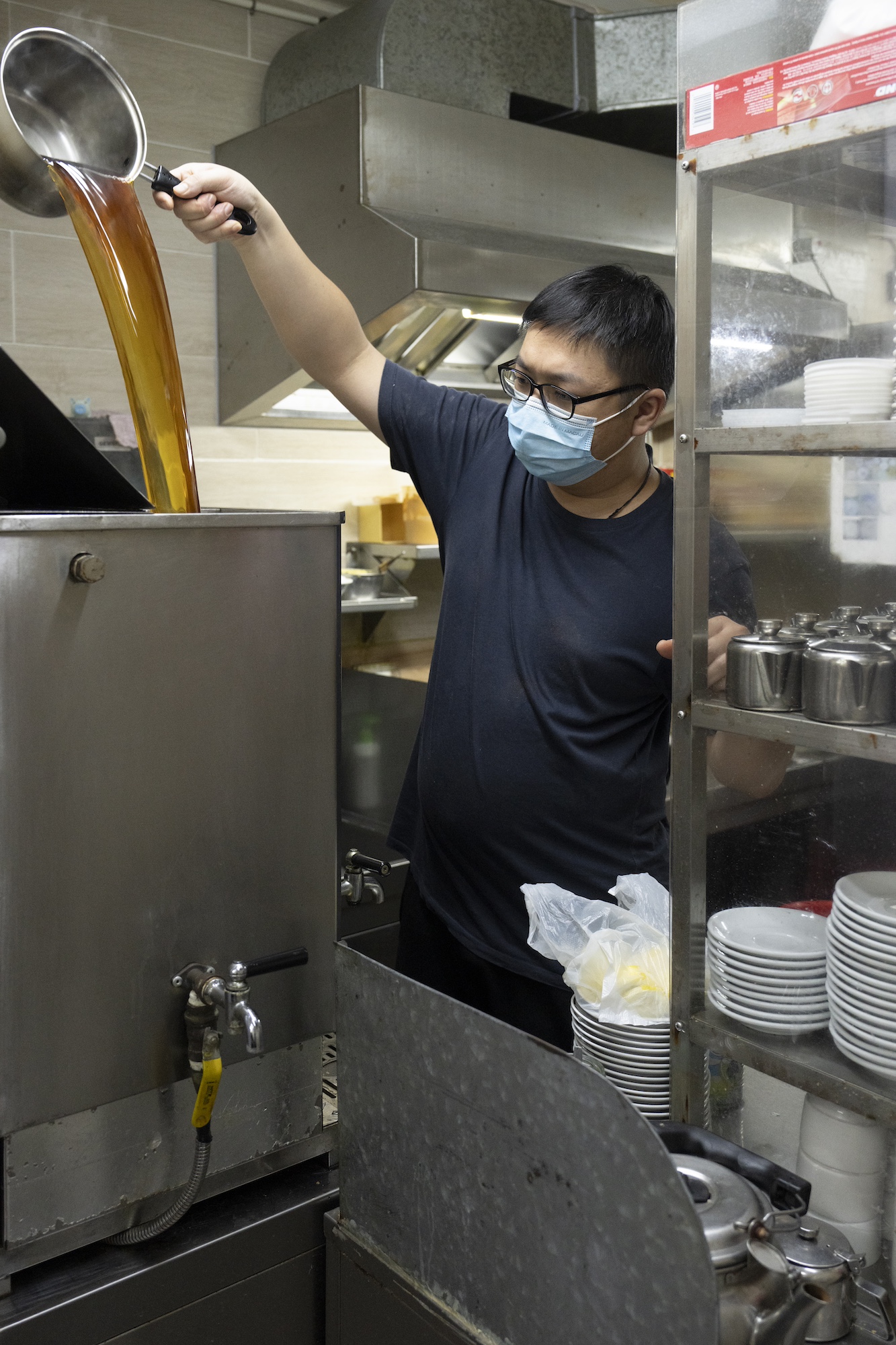
It was stressful, he notes, and he did consider throwing in the teatowel. But a daily sense of achievement made U Chong stick it out. “I remember once, there was a crowd waiting,” he recalls. “I’d just finished a sheet pan of coconut tarts and thought I might as well take them down. Those customers simply marvelled at the sight of them. I could hear their ‘wows’ all the way from upstairs and they really meant a lot to me.”
U Chong started running the business alongside his father in 2016. His favourite pastry is a pineapple bun– a soft bun covered with a thin, crumbly cooking dough – of which Chion Chau sells two sizes: big and small. “Other eateries put red bean paste into the big ones, but ours are filled with custard,” U Chong says. “As for the small ones, they don’t have any filling. People usually eat them by putting in a slide of butter.”
In addition to learning on the job from his dad, U Chong spent six months on a baking course organised by the Macau Federation of Trade Unions. That gave him the confidence and skills to start revising Chion Chau’s long-standing recipes, he says. U Chong has made the bread they sell softer, so elderly folk find it easier to chew. And his tarts have less sugar in them than Leong’s, as younger generations don’t like things too sweet. “My goal is to attract the masses,” U Chong explains.

But there are some trends in Macao’s hospitality scene the young baker would like to see reversed. He remembers a strong community spirit back when he helped out as a child, something that seems to have faded away. “Nowadays, people come in looking at their phones, eat fast, and then go,” U Chong says. “I hope, in the future, young people come in and have a chat instead of being distracted by social media. I hope they will treat Chion Chau as a place to enjoy having a rendezvous with their friends.”
